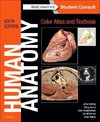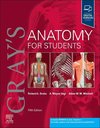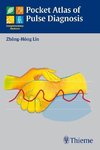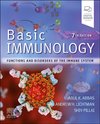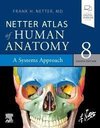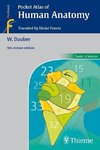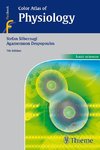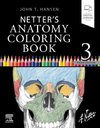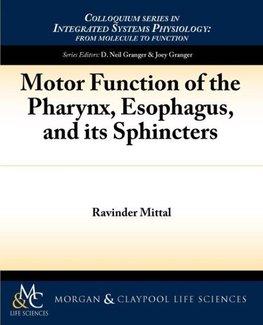
-
 Anglický jazyk
Anglický jazyk
Motor Function of the Pharynx, Esophagus, and Its Sphincters
Autor: Ravinder Mittal
Deglutition or a swallow begins as a voluntary act in the oral cavity but proceeds autonomously in the pharynx and esophagus. Bilateral sequenced activation and inhibition of more than 25 pairs of muscles of mouth, pharynx, larynx, and esophagus is required... Viac o knihe
Na objednávku
41.04 €
bežná cena: 45.60 €
O knihe
Deglutition or a swallow begins as a voluntary act in the oral cavity but proceeds autonomously in the pharynx and esophagus. Bilateral sequenced activation and inhibition of more than 25 pairs of muscles of mouth, pharynx, larynx, and esophagus is required during a swallow. A single swallow elicits peristalsis in the pharynx and esophagus along with relaxation of upper and lower esophageal sphincters. Multiple swallows, at closely spaced time intervals, demonstrate deglutitive inhibition; sphincters remain relaxed during the entire period, but only the last swallow elicits peristalsis. Laryngeal inlet closure or airway protection is very important during swallow. Upper part of the esophagus that includes upper esophageal sphincter is composed of skeletal muscles, middle esophagus is composed of a mixture of skeletal and smooth muscles, and lower esophagus, including lower esophageal sphincter, is composed of smooth muscles. Peristalsis progresses in seamless fashion, despite separate control mechanism, from the skeletal to smooth muscle esophagus. The esophagus's circular and longitudinal muscle layers contract synchronously during peristalsis. Sphincters maintain continuous tone; neuromuscular mechanisms for tonic closure in the upper and lower esophageal sphincters are different. Lower esophageal sphincter transient relaxation, belching mechanism, regurgitation, vomiting, and reflux are mediated via the brain stem.
Table of Contents: Introduction / Central Program Generator and Brain Stem / Pharynx-Anatomy, Neural Innervation, and Motor Pattern / Upper Esophageal Sphincter / Neuromuscular Anatomy of Esophagus and Lower Esophageal Sphincter / Extrinsic Innervation: Parasympathetic and Sympathetic / Interstitial Cells of Cajal / Recording Techniques / Motor Patterns of the Esophagus-Aboral and Oral Transport / Deglutitive Inhibition and Muscle Refractoriness / Peristalsis in the Circular and Longitudinal Muscles of the Esophagus / Neural and Myogenic Mechanism of Peristalsis / Central Mechanism of Peristalsis-Cortical and Brain Stem Control / Peripheral Mechanisms of Peristalsis / Central Versus Peripheral Mechanism of Deglutitive Inhibition / Neural Control of Longitudinal Muscle Contraction / Modulation of Primary and Secondary Peristalsis / Neural Control of Lower Esophageal Sphincter and Crural Diaphragm / Lower Esophageal Sphincter / Swallow-Induced LES Relaxation / Crural Diaphragm Contribution to EGJ and Neural Control / Transient LES Relaxation and Pharmacological Inhibition / Compliance of the EGJ / References
- Vydavateľstvo: Biota Publishing
- Rok vydania: 2011
- Formát: Paperback
- Rozmer: 235 x 191 mm
- Jazyk: Anglický jazyk
- ISBN: 9781615043330


